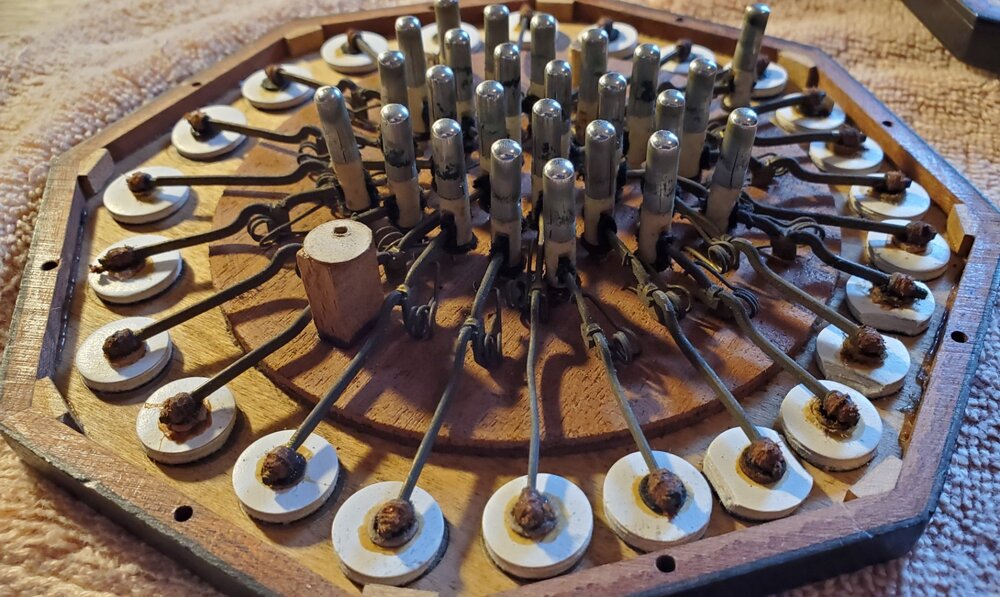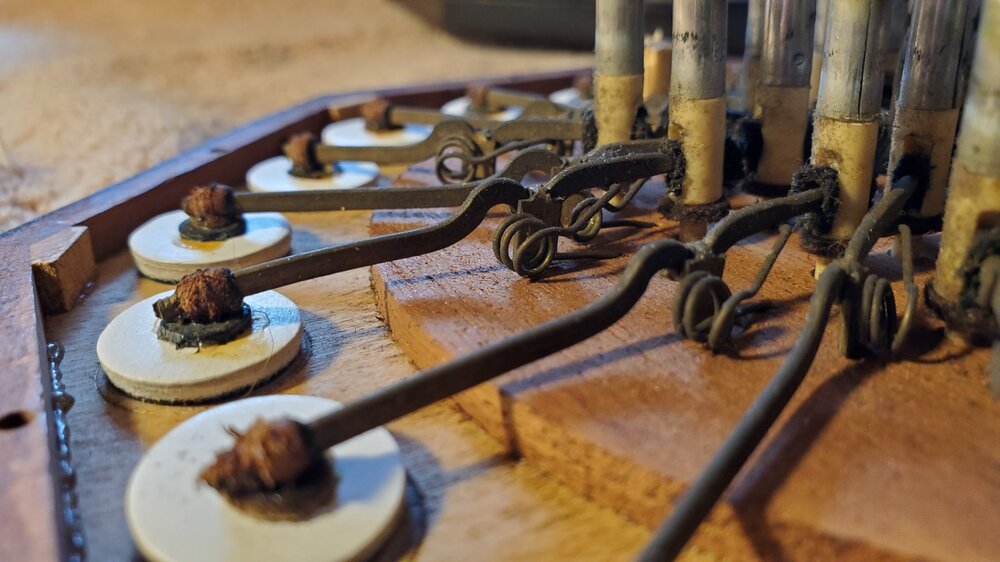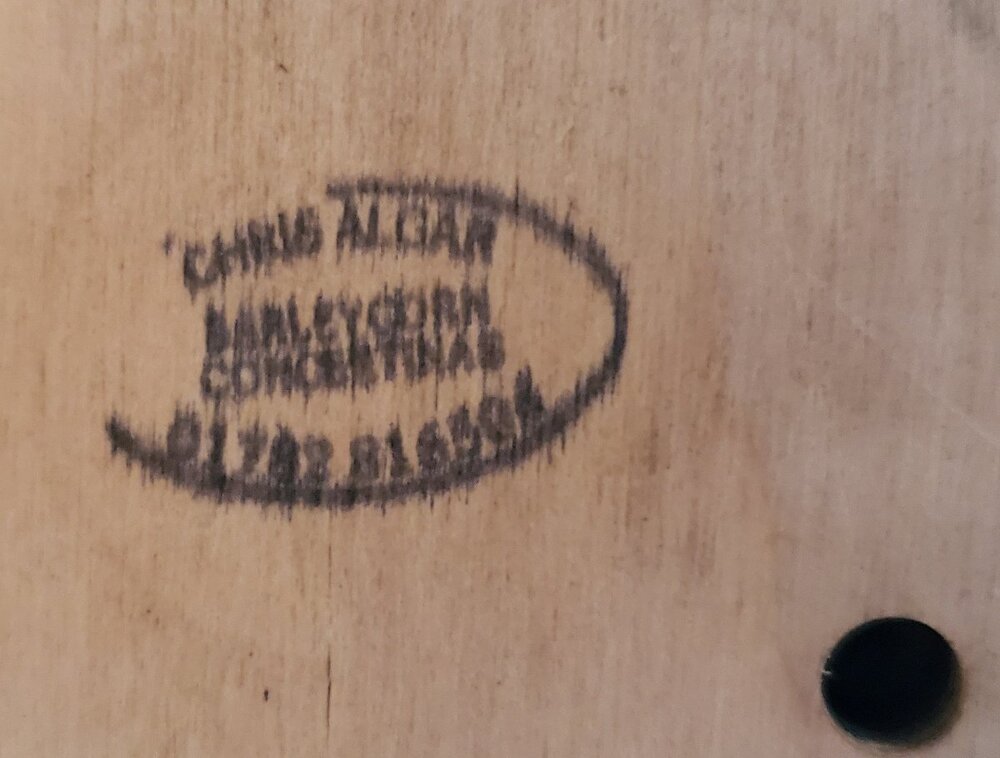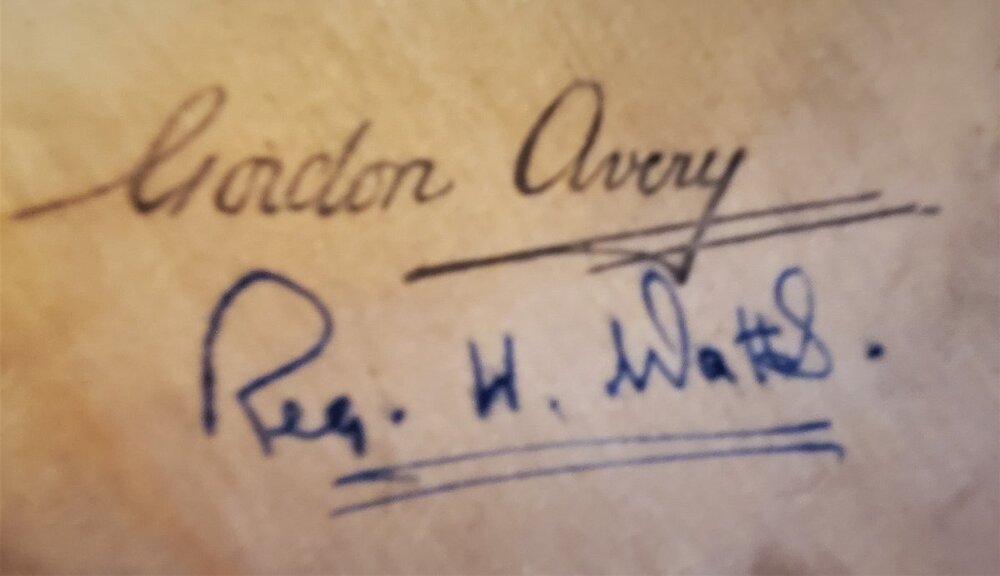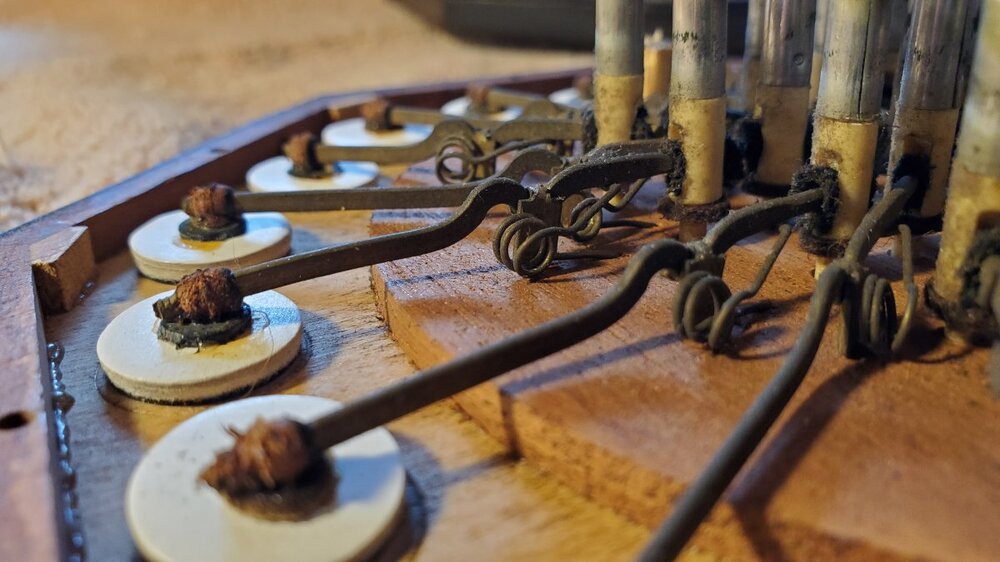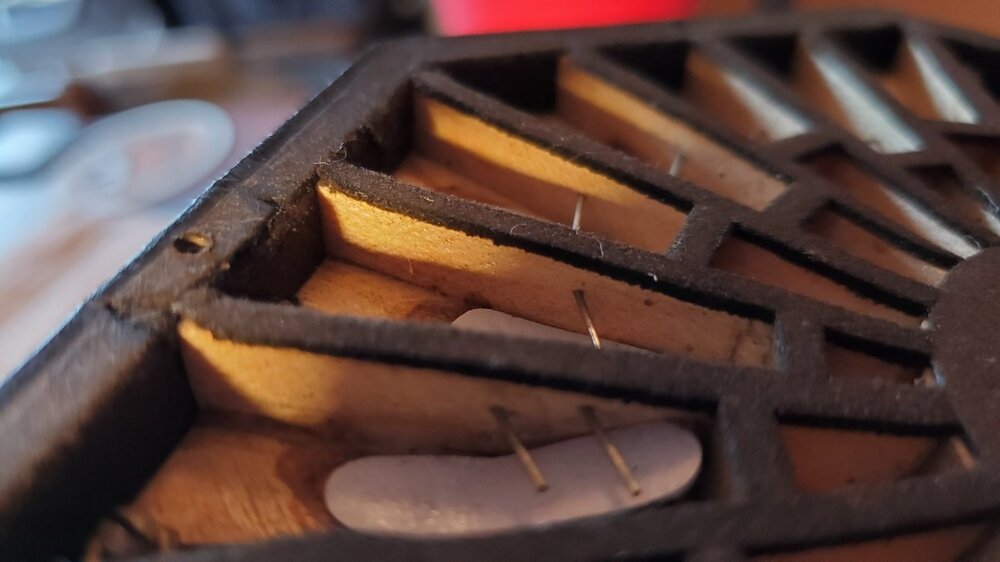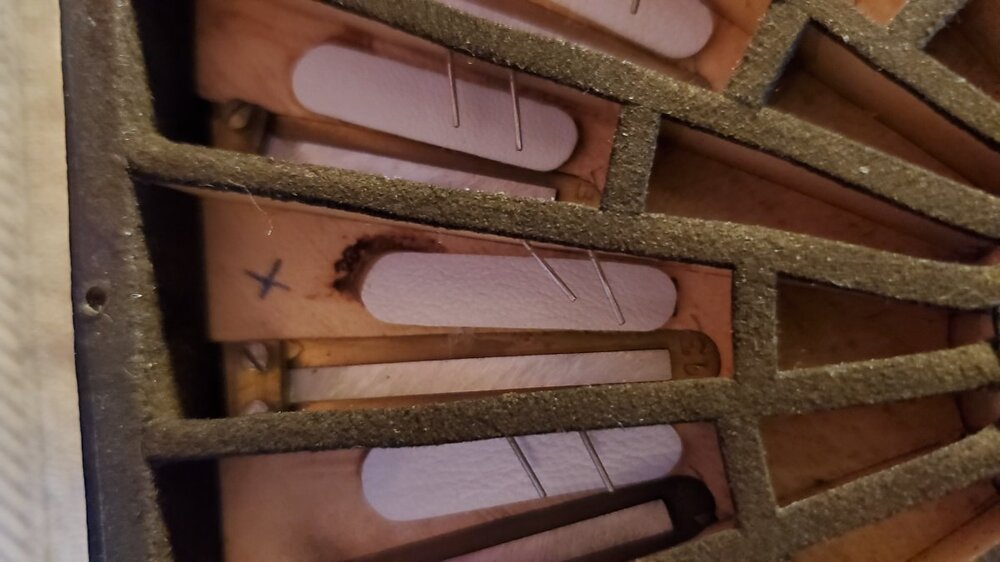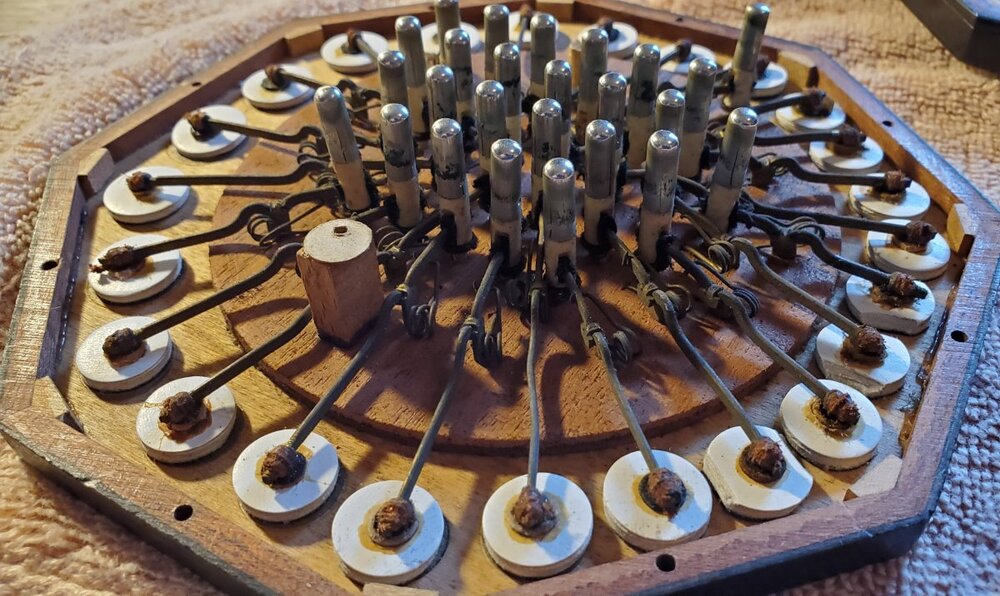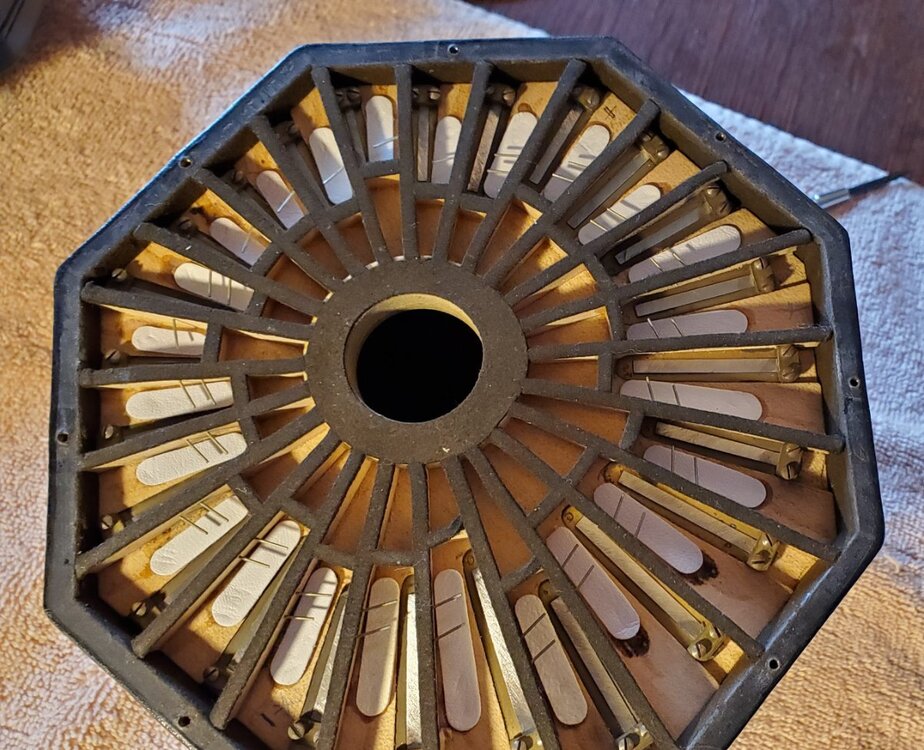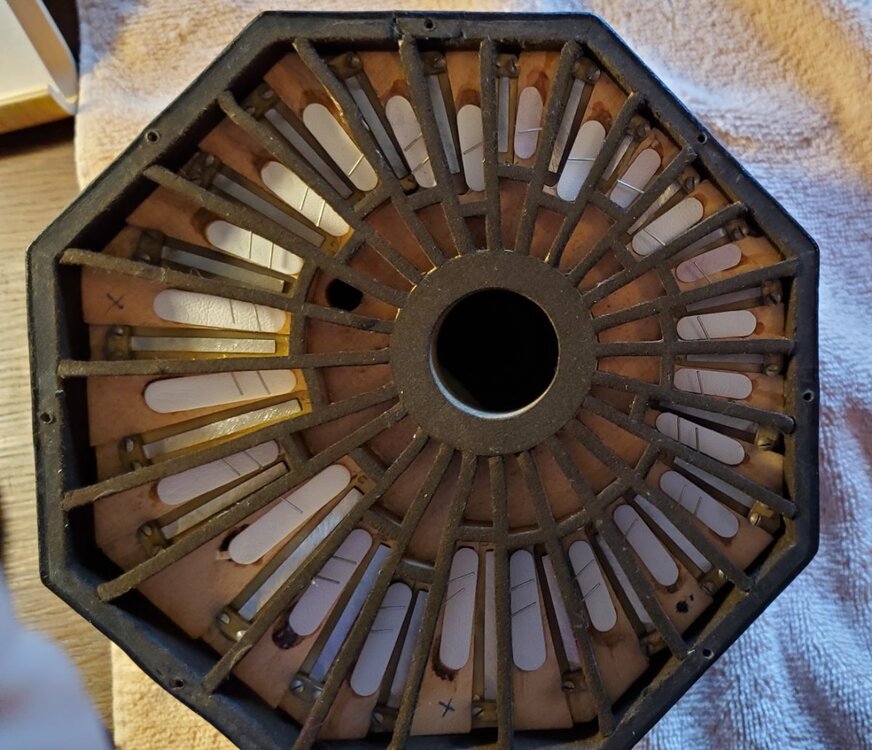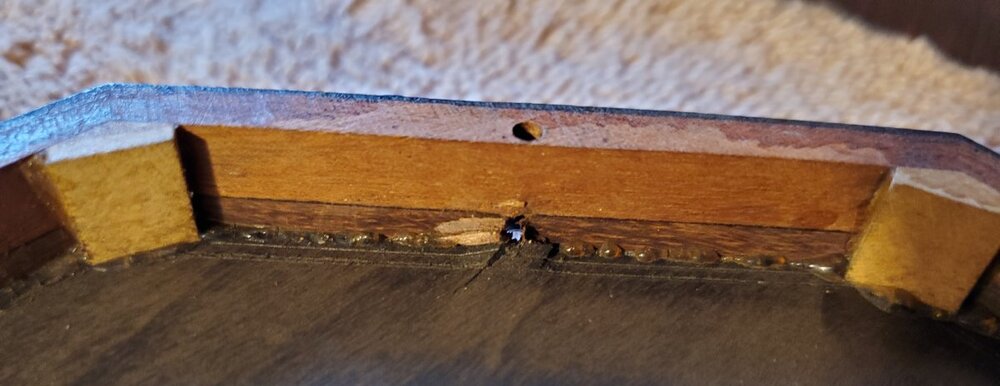-
Posts
71 -
Joined
-
Last visited
Everything posted by Syncopepper
-
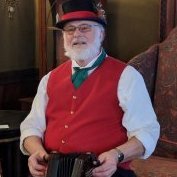
Chordal Accompaniment For Singing
Syncopepper replied to frogspawn's topic in General Concertina Discussion
I have played the EC for many years but only for accompaniment. I often spread out chords for a fuller sound to balance the singing like this: https://youtu.be/xA6K5GYCqDY?si=ekIr0R67NGGVYQED -

Any advice for a trip to Doolin, Ireland
Syncopepper replied to David Bradford's topic in General Concertina Discussion
I was travelling around Ireland a year ago last October with a mid-west traditional Irish group. We were in a lot of pubs but my favorite evening was at McGanns in Doolin. The place was packed and I filled in during the band's breaks singing and playingf an EC. -

How did you find your way to concertina?
Syncopepper replied to Capitanya's topic in General Concertina Discussion
Many years ago I was walking with my wife past a pawnship in the Washington DC area when she caught me giving lascivious looks at a red, mother-of-toilet seat, German anglo concertina. Low and behold a short time later it turned up as a going-a-way present when I left a job. I fooled around with it and learned maybe a dozen tunes but the magic had gone out of our union. Too much sucking and blowing. I didn't do much harmonica playing for the same reason. In those days I regularly attended a local english-style folk club - The Reston - Herndon Folk Club. Alistair Anderson was touring and did a concert at the club. I had the luck to sit with Alistair for dinner and discuss concertinas. He convinced me that the EC was the one for me. I traded Red in for a 48 key Trinity College tenor EC and never looked back. -

Concertina Juxtapositions
Syncopepper replied to Jody Kruskal's topic in General Concertina Discussion
The second one looks hard to squeeze... -

Zoom and Computer Mic Issue
Syncopepper replied to Randy Stein's topic in General Concertina Discussion
Since the start of the pandemic I have been regularly attending many ZOOM sessions sponsored by English and American folk organizations. I find I can get good results with a good Bluetooth microphone, original sound on with "suppress background sound" set to LOW, high fidelity music mode on, and echo cancellation. I also use a good Bluetooth speaker at least 8' from the microphone. -
Thanks, good to know that they weren't left-over Edeophone parts. Are these hook Aeolas very common? I wonder what design changes, if any, Lachenal made post 1900?
-
My extended treble New Model, circa 1890, has round hook levers and several are long and convoluted. The longest and most convoluted one fell victim to this "Cranked Arm Syndrome" a few years ago (a problem that has been discussed here in the past). The solution was to replace that key with a riveted action and I have not had any problem since. When I first examined the action on the hook Aeola I immediately thought the design change would alleviate this problem.
-
-
I have a tenor Wheatstone Aeola sn:35364 that I picked up a few years ago and have had fully restored. This unit was made in 1942 and has hook instead of riveted action (see photos). I have played a hook action New Model for years and have played numerous riveted Aeolas in the past. I have no problem with the hook action but am wondering how the flat type levers on this EC compare with the last Edeophones that Lachenal made before they went into bankruptcy. I have heard that Wheatstone used Lachenal parts during this period. Can anyone confirm that these flat hook levers are similar to the last Edeophones made? They are not like the hook levers in my New Model.
-
In October I will be traveling to Ireland for several weeks and bringing a wood-ended Aeola with me. At home my concertinas live in a climate controlled music room. October will likely be cool and wet in Ireland and I'm wondering if I should be doing something to keep it from picking up too much humidity. I have read that silica gel packs may overly dry the wood and, of course, taking it out to play will quickly expose it to whatever conditions are in the room. I have a hydrometer to keep in the case for monitoring purposes and could use silica gel with discretion to control humidity. Does this sound like a good idea? Also is it possible I may run into too dry conditions? I would appreciate any advice from those who have travel experience.
-

Is pulling faces needed to play well!
Syncopepper replied to SIMON GABRIELOW's topic in General Concertina Discussion
The legendary pianist, and Bach keyboard interpreter, Glen Gould would grunt and moan so much when playing that it was evident in his many recordings. -
I have an extended treble New Model without an air valve. Years ago I removed both high reeds and found they stored perfectly in the blocked off part of each reed chamber. If you ever need the note just take out the push side only and leave the other in. My Aeola has a thumb air release and I find the jury rigged one on the New Model both handier and able to move much more air.
-
My original Stagi Tenor EC got the presale attention thirty-five years ago from the old House of Musical Traditions in Tacoma Park, MD. It's never been serviced and still plays fine.
-

My new concertina (a quart in a pint pot)
Syncopepper replied to Little John's topic in General Concertina Discussion
As a thirty-five year EC player I learned a lot about the duet from your great video! -

Fabric Covered Bellows?
Syncopepper replied to Syncopepper's topic in Instrument Construction & Repair
It should be interesting to see how they hold up over time. I believe my Trinity cost me $600 - $700 When I bought it about 38 years ago. The leather bellows have held up just fine. I suspect these fabric based bellow won't last that long. -
I noticed entry level Trinity concertinas now come with "fabric covered bellows". I have a Trinity that I bought new 30+ years ago that has decent standard skived leather bellows. In the pictures the current ones have a fabric-like weave on the outer surface. I wonder if the fabric is just covering some other air-tight material or if these bellows use some kind of doped fabric which has been made air-tight? Anyone out there have any experience with, or information about them?
-
I was playing the uke, the guitar, and the tenor banjo by the time I was twelve years old. Through most of the ‘60s and early ‘70s I was a member of a folk group that regularly played at resorts in the mid-west booked through the Old Town School of Folk Music. Later when living in the Washington DC area I ogled a cheap German mother-of-toilet seat anglo in a pawn shop window while out walking with my wife. When I moved on from the job I had at the time the anglo turned up as my parting gift from fellow workers. I played around with the anglo for a year learning a few songs when I had the privilege of eating dinner with Alistair Anderson when he appeared at my local folk club. While we ate Alistair suggested I might like the EC better and the reasons why. After his performance that night I was hooked on ECs and traded in the anglo on a Trinity Tenor and never looked back. Years later I moved up to an early New Model lovingly restored by Wim Wakker for his daughter. Now Wim has just finished a complete restoration on a Tenor Aeola I recently acquired and I am eager to soon get my hands on it. As the years have past arthritis and tendinitis have taken their toll and I have had to curtail playing my stringed instruments. I am very glad to have the more ergonomic concertinas to fall back on.
-
You can take a rest for the last two years before retirement. They will go very slowly...
-
I found this fascinating video about the Sheng including it's history, construction and much more. Of particular interest is the information about the free reeds and how they are made, prepared, tuned, and how they interact with the bamboo pipes.
-

Supporting Live Music. Do you?
Syncopepper replied to Randy Stein's topic in General Concertina Discussion
I have been visiting chanty sings and folk clubs via Zoom in the US and UK about three time a week during the pandemic. I live in a part of Michigan where English and Maritime music are not popular. It's nice to meet more people with similar interests. Sound and lack of corroboration are Zoom shortcomings so they are more like open mics and listeners stay muted and play along if they wish. These sessions are well attended by both professional and non-professional musicians. It appears that some Zoom sessions are wholly online entities that did exist as pre-pandemic organizations. I wonder if some of these may have a life after the Pandemic's end? Some of these sessions have links to their non-profit web-sites, where one can easily donate. The donations heIp support musicians. -
My concertinas and other instruments have lived in a small room for decades. In my old house humidity was controlled by a whole house humidifier on the furnace and also a room humidifier to fine tune humidity to 50%. I use an evaporative humidifier after having bad experiences with ultrasonic ones that disperse a white sticky mineral dust over everything. A year and a half ago I moved from a newer house with forced air heat and central AC to an older home with hot water heat and separate central AC. I have found that hot water heat is much less drying than the forced air heat. Also with our previous well water went through a water softener but still had a lot of mineral salts collecting in the humidifier. Our current city water works quite well with the room humidifier.
-

Lachenal spring problem (English Concertina)
Syncopepper replied to Gail_Smith's topic in Instrument Construction & Repair
I had the cranked arm, worn pivot problem on my extended treble New Model. It was the longest, most convoluted lever in the box. I understand that long levers with lots of kinks are most susceptible to this problem. After much fooling around I had that action replaced with a riveted one and have had no further problems. -
Years ago I bought a concertina case cover from one of the UK suppliers. Unfortunately I don't remember which. I originally bought it because the hard case has only one hasp and I was worried about it accidently opening and dumping the concertina on the floor. It is made of heavy Cordura and a little larger than the hard case which fits into it. The two open halves zip together with a three sided zipper and it has a stout shoulder strap. I've used it for years at gigs and festivals and it works well for me - never a drop or a scratch. It's so handy I never bother taking the case out of the Cordura cover. If no longer available a sewer should be able to make one up with a few measurements of the hard case.
-
I promised to update the forum with a full rundown on my recent purchase of a tenor Aeola on eBay. The Aeola arrived yesterday without any shipping damage. As it was made in late 1942 I had worried that it might not be up to the quality of the older ones but I was pleasantly surprised. It was completely playable out of the box. While the ends have not been restored and show their age, they are solid and have only a few hairline age cracks. While not expert, I do not see that any of the fretwork has been rebuilt and it all looks in good shape to me. The bellows have some wear on the bottom edge that rests on the leg but are otherwise in good shape. The case the Aeola arrived in is unblocked and I noticed that when resting on a flat surface the bellows want to expand a little, unlike my Lachenal New Model which lives in a blocked case. When first playing I found myself sympathetically gasping as I kept running out of air before my usual bellow reversals as it is not as air tight as the New Model. The New Model was completely restored some years ago by Wim Wakker and it’s newer bellows are pretty air tight. Regarding the Wheatstone, I could not ascertain air leakage from the bellows but could feel some air escaping through the fretwork on the ends, primarily on the right side. Upon disassembly I found stamps (see pics) from Chris Alger and two other persons (anyone recognize them?) on the pad boards. The seller thought he had bought it from Barleycorn about ten years ago. Pads and leather valves look to be in good shape. The long tongue steel reeds are set in brass shoes. The keys are metal over plastic-like cores and all are of a consistent height. The action is the later hook and post but has improvements over my New Model (circa 1880’s). The cross section of the levers are rectangular instead of round and pivot on a different kind of post. As an extended treble the New Model a few years ago had “cranked arm syndrome” as discussed on this forum in the past. Some of the levers on the extended treble are quite long and kinky and one of those had worn down at the pivot so that it swiveled when it moved and the pad would sometimes not seal properly. Wim replaced that one with a riveted action and I have had no further problem. The Aeola, being a 48 key tenor, does not have the long kinky levers and the flat sided lever design seems to be more stable. I have tried many Aeolas in the past but not where I could do so side-by-side with my Lachenel and previously thought the New Model’s action was completely comparable to those Aeolas I have tried in the past. While the difference is subtle I think the action on this Aeola is a little more expressive. The reeds (which on the New Model Wim described as “Superb”) are very similar both in sound and design and I am hard pressed at this point to describe any sound differences between the two. Upon disassembly I was not able to find any obvious sources of the air leaks. Referring to the pictures of the edge of the right end cover, there were in two places where holes from the inner edge connected to the screw holes through which air passes. While I wouldn’t think air leaks from the action box to the reed chambers should be a problem I wonder if the screw-holes which continue down through the reed pan to the bellows frame could be a path for leaking air through these holes? If so what would be the recommend plug for the pierces - PVA glue? The other thing I noticed is that the black seals between the reed chambers, bellows frame and pad board seems to be thinner and less spongy than the usual chamois. I intend to put wrist straps on this Aeola which must have had some installed before as there are threaded inserts for them at the top and just holes in the wood on the bottom for each side where I assume just screws with grommets were used in the past.



